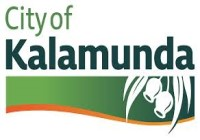Occupations are a key component in evaluating the knowledge, experience and skill-levels that industry can draw upon locally. It should be viewed with other indicators, such as Age structure, Qualifications, and Income for a comprehensive analysis of the City of Kalamunda's local resident workers.
When comparing the occupations of local resident workers with local workers, Occupation data indicates whether an economy draws on the skills offered by its own residents or relies on a different set of skills imported from elsewhere in the region.
Data source
Australian Bureau of Statistics (ABS) – Census 2016 and 2021 – by usual residence
Select industry:
Current benchmark:
Sex:
| Resident workers occupations | |||||||||
|---|---|---|---|---|---|---|---|---|---|
| City of Kalamunda | 2021 | 2016 | Change | ||||||
| Occupations (Click rows to view sub-categories) | Number | % | Western Australia | Number | % | Western Australia | 2016 - 2021 | ||
| Managers | 3,443 | 11.9 | 12.3 | 3,018 | 11.1 | 12.0 | +425 | ||
| Professionals | 5,442 | 18.8 | 22.0 | 4,649 | 17.1 | 20.5 | +793 | ||
| Technicians and Trades Workers | 5,011 | 17.3 | 15.3 | 4,829 | 17.7 | 16.2 | +182 | ||
| Community and Personal Service Workers | 3,138 | 10.8 | 11.8 | 2,765 | 10.1 | 10.6 | +373 | ||
| Clerical and Administrative Workers | 4,186 | 14.4 | 12.1 | 4,276 | 15.7 | 13.0 | -90 | ||
| Sales Workers | 2,198 | 7.6 | 7.8 | 2,383 | 8.7 | 8.8 | -185 | ||
| Machinery Operators And Drivers | 2,690 | 9.3 | 7.7 | 2,572 | 9.4 | 7.5 | +118 | ||
| Labourers | 2,378 | 8.2 | 9.4 | 2,344 | 8.6 | 9.7 | +34 | ||
| Inadequately described or not stated | 490 | 1.7 | 1.7 | 413 | 1.5 | 1.7 | +77 | ||
| Total Persons | 28,976 | 100.0 | 100.0 | 27,249 | 100.0 | 100.0 | +1,727 | ||
Source: Australian Bureau of Statistics, Census of Population and Housing 2016 and 2021. Compiled and presented by .id (informed decisions) | |||||||||


Dominant groups
An analysis of the jobs held by the resident workers in the City of Kalamunda in 2021shows the three most popular occupations were:
- Professionals (5,442 people or 18.8%)
- Technicians and Trades Workers (5,011 people or 17.3%)
- Clerical and Administrative Workers (4,186 people or 14.4%)
In combination these three occupations accounted for 14,639 people in total or 50.5% of the resident workers (All industries).
In comparison, Western Australia employed 22.0% in Professionals; 15.3% in Technicians and Trades Workers and 12.1% in Clerical and Administrative Workers.
The major differences between the jobs held by the resident workers (All industries) of the City of Kalamunda and Western Australia were:
- A smaller percentage of resident workers (All industries) employed as Professionals (18.8% compared to 22.0%)
- A larger percentage of resident workers (All industries) employed as Clerical and Administrative Workers (14.4% compared to 12.1%)
- A larger percentage of resident workers (All industries) employed as Technicians and Trades Workers (17.3% compared to 15.3%)
- A larger percentage of resident workers (All industries) employed as Machinery Operators And Drivers (9.3% compared to 7.7%)
Emerging groups
The number of resident workers (All industries) in the City of Kalamunda increased by 1,727 between 2016 and 2021.
The largest change in the occupations of the resident workers between 2016 and 2021 in the City of Kalamunda were those employed as:
- Professionals (+793 persons)
- Managers (+425 persons)
- Community and Personal Service Workers (+373 persons)
- Sales Workers (-185 persons)
